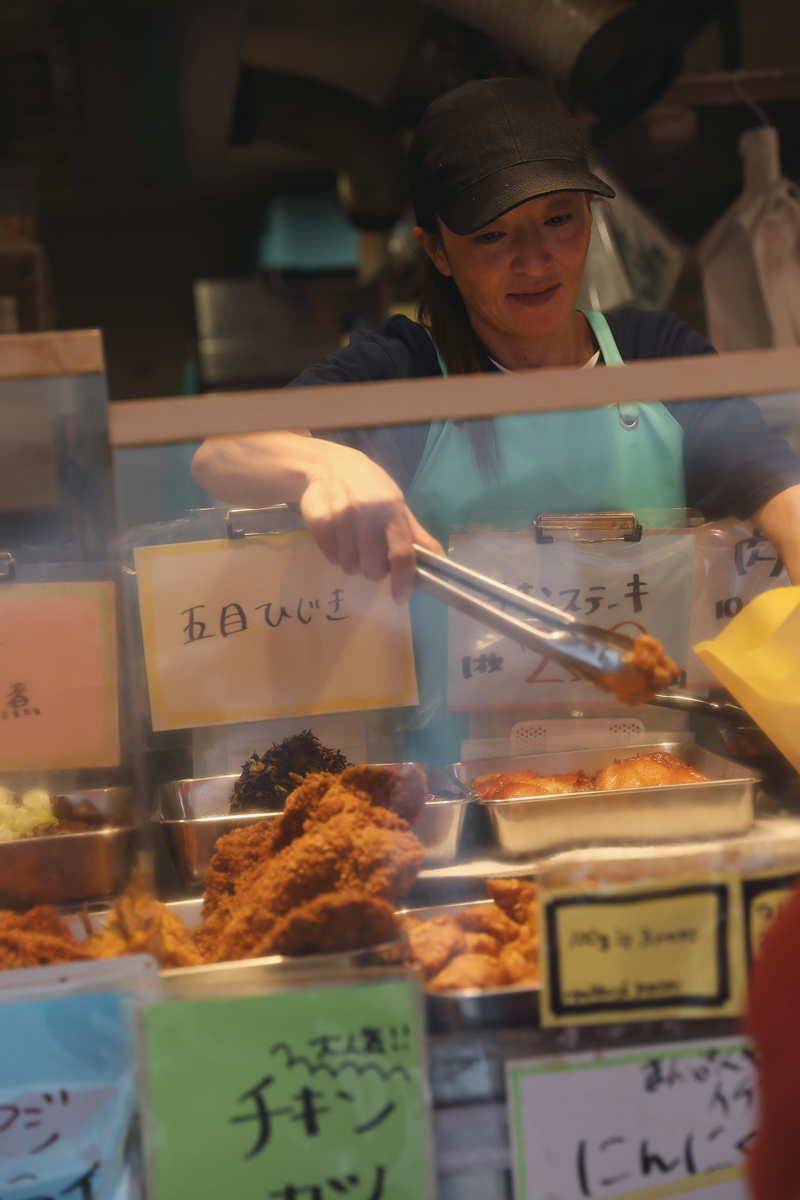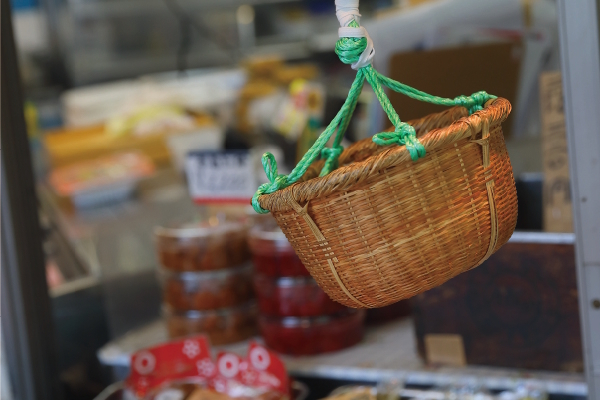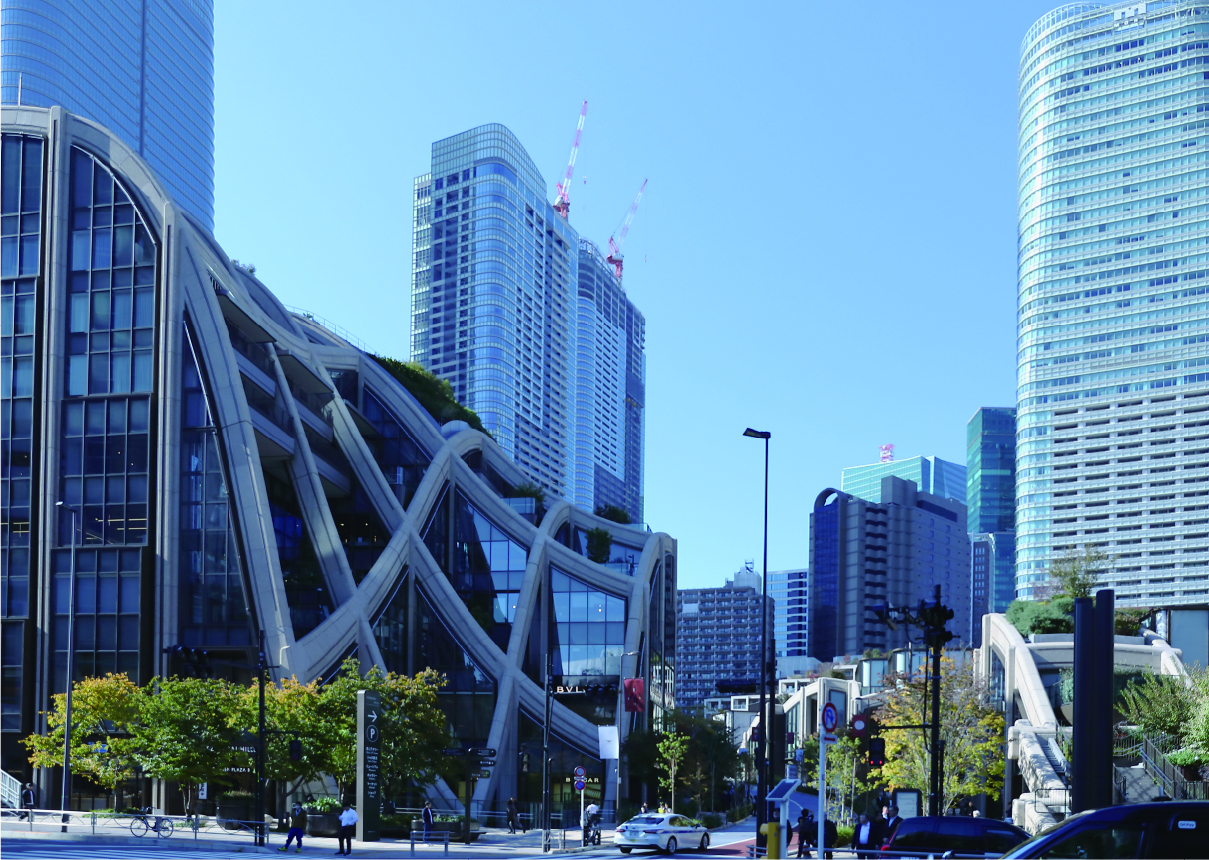もっとこの街が好きになりそう。成功した再開発のひとつ、下北沢。
Feature | 2024.12.13

チェーン店ではなく個性あふれる店や施設が並ぶ「下北線路街」。
再開発を成功させたのは下北らしい“対話”。
下北沢が生まれ変わってしばらくが経つ。足を運んでみると、相変わらず若者が多く、活気にあふれている。
いま東京のあちらこちらで行われている再開発はどこを切っても同じ金太郎飴のようなもの。駅前に高層ビルが建ち、住居があり、オフィスがあり、その足元にはチェーン店が入っている。しかし、下北沢の再開発はちょっと違う。
再開発にいたるきっかけは小田急線の「開かずの踏切」だったという。最大で1時間のうち40分以上も遮断機が下りていたというから渋滞もすごかっただろう。これはなんとかしなければということで2004年、小田急線を地下化する工事を開始した。そうして2022年5月に全面開業されたのが「下北線路街」。小田急線の東北沢〜下北沢〜世田谷代田の線路跡地に新しい街が生まれた。しかし、そこにいたるまで紆余曲折があったという。
下北沢はサブカルの街。演劇、音楽、美術などのアーティストが多くいて、東京のトレンディな街とは一線を画していた。個人経営の店が多く、それぞれに常連客がいて、夜ごとロック談義に花を咲かせるバンドマンや演劇論を交わす劇団員たちがいるような場所。そんな “シモキタらしさ” を住民たちは愛していたし、誇りに思っていた。この再開発の話が持ち上がった当初、住民たちは街が変貌することや高いビルが建つことを懸念して反対運動や行政訴訟を起こした。
それを解決に導いたのは徹底的な対話だったという。住民や区の担当者による意見交換会を世田谷区が主催、そこに小田急も加わり何回にもわたって話し合いが行われた。下北沢をいい街にしたい。そんな下北沢の良さとは “シモキタらしさ” にある。区も電鉄も住民も、みんながそういう想いだったのだろう。結果、再開発は成功した。
下北沢駅に着く。新しい駅舎には個性的な飲食店や雑貨店が入り、かつて線路があった場所には商業施設などが立ち、一帯で「下北線路街」と呼ばれる街となっている。ここにはカフェをはじめ、レコード店や本屋、ファッション雑貨店、さらには箱根から温泉を運んでくる温泉旅館や保育&コミュニティの場など、“シモキタらしさ” があるユニークなショップや施設が並んでいる。また、緑が心地いい散策路としても整備され、若者から家族連れまで楽しそうに歩いている。
自分は、この再開発の話がでてきた頃、下北沢に住んでいた。この街が大好きだったから、再開発で駅前に幹線道路が通り、高層ビルができ、ロータリーを囲むようにチェーンの居酒屋などが並んだらどうしようかと心配だった。その後、引っ越しをして久しぶりに訪れた下北沢を歩いて安心した。いい街になったと思った。
下北沢の再開発は成功したと思う。そして成功の秘訣は対話だったのでは。いま問題になっている再開発はどこも、この対話が足りていない。事業者と住民、地域の人たちが顔を合わせ、話し合いを重ねる。夜の下北沢でバンドマンや劇団員たちが激論をしていたように。対話も “下北らしさ” だったのかもしれない。
Falling in Love with the City Again:
Shimokitazawa’s Redevelopment Success
Shimokita Line Street thrives with unique shops and facilities,
not chain stores.
Its success lies in Shimokita-style “dialogue.”
It’s been some time since Shimokitazawa transformed, yet I find that the area remains lively and full of young energy.
Unlike many of Tokyo’s redevelopment projects, which often result in identical high-rise clusters filled with chain stores, Shimokitazawa’s story is different.
The redevelopment began with a practical issue: the Odakyu Line’s infamous “never-opening” level crossing, where gates could be down for up to 50 minutes per hour, causing heavy congestion. This led to the decision to underground the Odakyu Line, a project begun in 2004 and completed in May 2022, giving rise to Shimokita Line Street, a vibrant new district stretching from Higashi-Kitazawa to Shimokitazawa to Setagaya-Daita along the former railway tracks. However, there were twists and turns along the way.
Shimokitazawa has long been a hub for subculture—home to artists, musicians, and theater enthusiasts. Independent shops and intimate venues thrived here, creating a unique “Shimokita-ness” beloved by residents. When redevelopment was proposed, locals feared losing this charm to towering buildings and corporate chains. Their concerns led to protests and lawsuits against the plans.
The turning point came through dialogue. Setagaya Ward facilitated discussions between residents, the Odakyu Railway, and local officials, hosting numerous exchange meetings. All parties shared a common goal: to preserve and enhance Shimokitazawa’s character. The results speak for themselves.
Today, Shimokitazawa Station’s new building houses distinctive eateries and shops Stepping out, visitors find Shimokita Line Street, a stretch of unique businesses: cozy cafes, record stores, bookstores, fashion boutiques, and even an onsen bringing hot springs from Hakone. A sense of “Shimokita-ness” pervades every corner, from green walking paths to community hubs enjoyed by families and young people alike.
Having lived in Shimokitazawa during the redevelopment’s early days, I worried the area might lose its soul to generic roads and chain izakayas. Returning after years away, I was relieved to find a city that had grown better while staying true to itself. Shimokitazawa’s redevelopment is, without a doubt, a success—a model of how dialogue can shape urban transformation.
The ongoing redevelopment issues in other parts of Tokyo could learn from Shimokitazawa. Genuine dialogue—bringing together residents, developers, and the community—is crucial. Perhaps even that willingness to engage in passionate debate, much like the band members and actors of Shimokitazawa’s spirited nights, is part of what makes this place so special. In the end, dialogue itself may be the essence of “Shimokita-ness.”




閲覧中の特集はこちら





